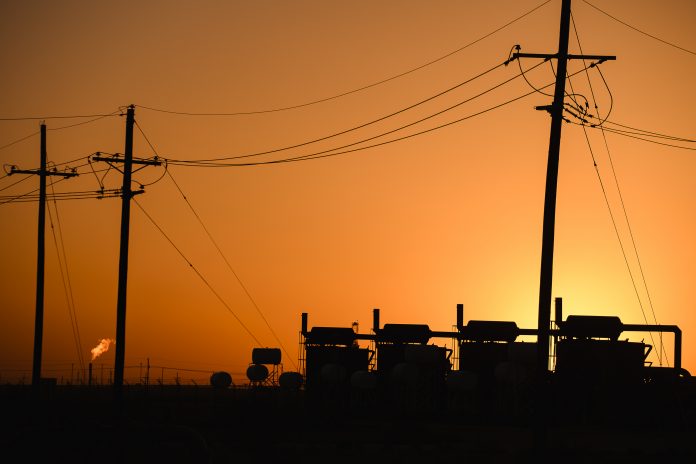
Hitting $9.85 per thousand cubic feet on Aug. 22, 2022, the price of natural gas started dropping till it was under $3 and it has stayed there all this year.
Now awaiting the completion of more liquefied natural gas export terminals to supply gas-hungry international markets, American producers are hunkering down and bracing for more unprofitable years.

“To me, the oil and natural gas prices are disconnected and the main driver for that is Saudi Arabia and OPEC-Plus being in control of the oil price,” Odessa oilman Kirk Edwards said Wednesday. “As we can see the recent Saudi announcements of continuing to withhold some 1.7 million barrels a day of oil off the market have had a very positive effect on the oil price.
“Conversely the United States and Permian Basin are producing a record amount of natural gas, which in itself drives the price down. Natural gas is a domestic commodity till we can get enough LNG facilities to export the excess gas we are producing in the country.”
Edwards said the very cold winter two years ago showed what cold weather would do for pricing as American consumers used up all the excess.
“Last year was exactly the opposite as a mild winter in the Northeast made for very little usage of natural gas and thus drove the price back down near the $2 range,” he said. “Hopefully with Russia being the previous main supplier of natural gas to Europe the U.S. producers will now take that role.
“Unfortunately, the infrastructure to get that much more gas into an LNG form and shipped over to them is still years away from reaching its full potential. If you are in the natural gas market you are definitely hoping for a cold winter ahead.”
Permian Basin International Oil Show President Larry Richards said a thousand cubic feet of natural gas has roughly one-sixth the energy-producing capacity of a barrel of crude oil.

“Based strictly on the math that suggests when oil trades at $75 a barrel an mcf of gas would be worth roughly $12.50,” Richards said. “While natural gas is tougher to store than oil it makes no sense that natural gas prices have stayed in the $2 range as oil prices continued to rise.
“Add in the fact that natural gas is by far the cleanest burning of all fossil fuels and it makes even less sense when our industry and nation are trying to reduce harmful emissions. We have massive natural gas deposits across the U.S., but most are not commercially viable to produce at $2.50 per mcf. Meanwhile we continue to produce electricity with coal, the dirtiest of the fossil fuels, and subsidize various renewables that have proven much less reliable than natural gas when emergencies arise.”
Richards said natural gas provides 40 percent of all electric power generation in the United States while 20 percent is still provided by coal-fired plants and 21 percent by all renewables combined including 6 percent from the old hydroelectric dams built in the 1950s.
“The problem with converting plants to natural gas has always been the massive volatility in natural gas prices,” he said. “While we remember the Enron debacle as court cases many utility executives remember it as the time their boss and their boss’s boss got fired for being the decision-makers who converted a plant to natural gas only to see the price of their gas feedstock increase 10 times in a matter of months.
“We’ve come a long way since Enron, but the stigma remains. I believe the completion of many new LNG plants across the Gulf Coast and re-gasification plants along our eastern and western seashores over the coming decade will help allow natural gas pricing to stabilize into a truly global commodity less prone to the whims of an isolated domestic market.”
Richards said that should reduce the risk for power plant conversions and allow a fuller utilization “of this amazing natural resource that our county has in such abundance.
“Our task as an industry is to produce, transport and utilize every molecule of natural gas that we bring to the surface without allowing it to vent or flare and to show our communities and nation that we can be good stewards of this resource,” he said.

Waco economist Ray Perryman said the natural gas market “is always complex and it is impacted by many factors.”
Answering a question from the Odessa American, Perryman said, “I am not seeing anything to suggest that the federal government is doing anything to distort the interplay of supply and demand.
“Some of the long-term strategies by the U.S. and others to reduce the use of fossil fuels could potentially deter investment, but that possibility is likely to be more than offset by the increase in demand in emerging segments of the world,” he said. “The primary reason for the current low natural gas prices is on the supply side. There is just a lot of it with the Permian Basin and other production areas seeing record levels in output.
“A significant portion of this production is associated with oil activity and given current pricing conditions in the oil market that is unlikely to change anytime soon.”
Perryman said other factors include more LNG facilities having come online and Europe’s now largely complete transition to less dependence on Russia on a short-term basis, “although much more infrastructure is needed for long-term solutions.
“Demand has also dampened in many parts of the world due to a slowing economy and a relatively mild winter worldwide, which has allowed supplies in storage to remain high,” he said. “Things can change very quickly, but I think relatively low prices are likely for a while longer due to the excess supply and conditions that are likely to keep production elevated.
“The most likely source of any short-term increase in price is the fact that much of the Asian market is beginning to see some pretty substantial momentum.”
But Perryman said low prices probably won’t persist over the long term.
“Substantial additional LNG capacity is rapidly coming online, much of it in Gulf Coast ports linked to Permian capacity,” he said.
“This process is converting natural gas into a global market commodity and it will allow highly efficient U.S. producers to provide for the demands of the emerging world. “Approximately 80 percent of the incremental demand is expected to be in these regions of the world and the U.S. Energy Information Administration expects global demand for natural gas to increase by more than 30 percent by 2050.
“These conditions will lead to pricing that supports ongoing investment and resource development.”



